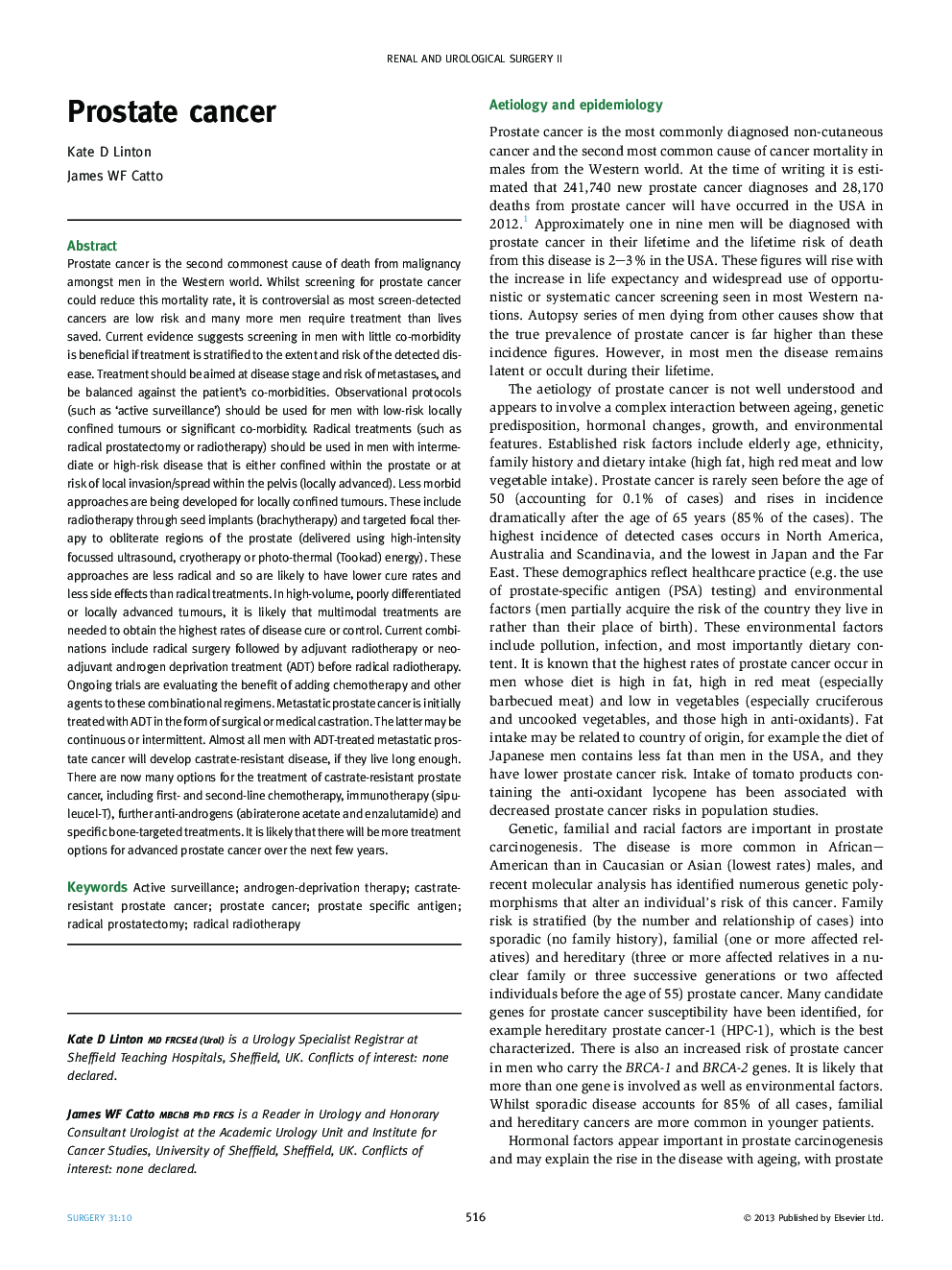| کد مقاله | کد نشریه | سال انتشار | مقاله انگلیسی | نسخه تمام متن |
|---|---|---|---|---|
| 3838941 | 1247755 | 2013 | 7 صفحه PDF | دانلود رایگان |

Prostate cancer is the second commonest cause of death from malignancy amongst men in the Western world. Whilst screening for prostate cancer could reduce this mortality rate, it is controversial as most screen-detected cancers are low risk and many more men require treatment than lives saved. Current evidence suggests screening in men with little co-morbidity is beneficial if treatment is stratified to the extent and risk of the detected disease. Treatment should be aimed at disease stage and risk of metastases, and be balanced against the patient's co-morbidities. Observational protocols (such as ‘active surveillance’) should be used for men with low-risk locally confined tumours or significant co-morbidity. Radical treatments (such as radical prostatectomy or radiotherapy) should be used in men with intermediate or high-risk disease that is either confined within the prostate or at risk of local invasion/spread within the pelvis (locally advanced). Less morbid approaches are being developed for locally confined tumours. These include radiotherapy through seed implants (brachytherapy) and targeted focal therapy to obliterate regions of the prostate (delivered using high-intensity focussed ultrasound, cryotherapy or photo-thermal (Tookad) energy). These approaches are less radical and so are likely to have lower cure rates and less side effects than radical treatments. In high-volume, poorly differentiated or locally advanced tumours, it is likely that multimodal treatments are needed to obtain the highest rates of disease cure or control. Current combinations include radical surgery followed by adjuvant radiotherapy or neo-adjuvant androgen deprivation treatment (ADT) before radical radiotherapy. Ongoing trials are evaluating the benefit of adding chemotherapy and other agents to these combinational regimens. Metastatic prostate cancer is initially treated with ADT in the form of surgical or medical castration. The latter may be continuous or intermittent. Almost all men with ADT-treated metastatic prostate cancer will develop castrate-resistant disease, if they live long enough. There are now many options for the treatment of castrate-resistant prostate cancer, including first- and second-line chemotherapy, immunotherapy (sipuleucel-T), further anti-androgens (abiraterone acetate and enzalutamide) and specific bone-targeted treatments. It is likely that there will be more treatment options for advanced prostate cancer over the next few years.
Journal: Surgery (Oxford) - Volume 31, Issue 10, October 2013, Pages 516–522